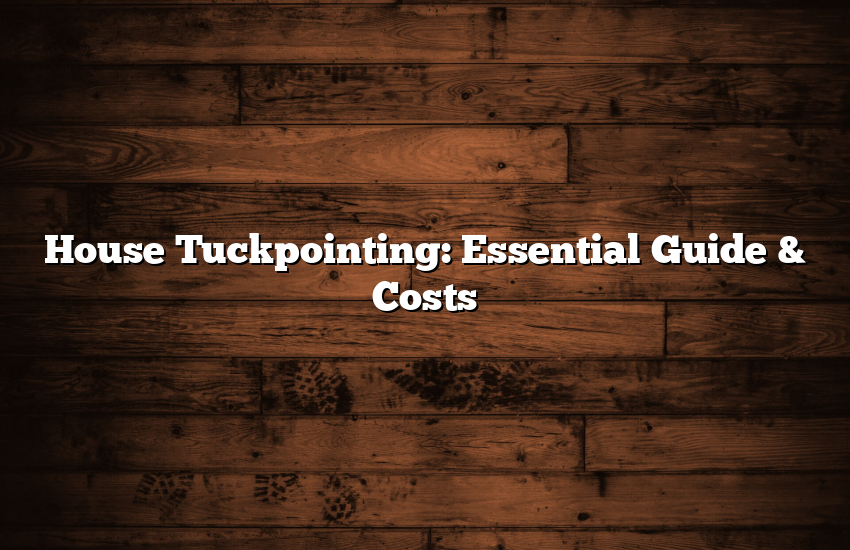
House tuckpointing, a crucial process in the maintenance of brick structures, involves the careful repair and replacement of mortar between bricks. This technique not only enhances the aesthetic appeal of a house but also strengthens its structural integrity. Tuckpointing is particularly important in regions with fluctuating weather conditions, as it protects against water damage and erosion. Understanding the nuances of this process, including the average cost to tuckpoint a house, is essential for homeowners seeking to preserve the beauty and durability of their brickwork.
Table of Contents
Understanding the Tuckpointing Process
How to Tuckpoint a House
Tuckpointing is a meticulous process that involves several steps:
- Mortar Removal: Old, damaged mortar is carefully removed from the joints between bricks.
- Mortar Preparation: A new mortar mix, matching the original mortar’s color and texture, is prepared.
- Mortar Application: The new mortar is applied carefully to the joints.
- Finishing Touches: The joints are shaped and smoothed to ensure a neat appearance.
Benefits of Tuckpointing
- Structural Integrity: Prevents decay and crumbling of brickwork.
- Aesthetic Appeal: Enhances the overall look of the house.
- Weather Resistance: Provides protection against water ingress and weather-related damage.
The Costs of Tuckpointing a House
Factors Influencing Cost
The cost to tuckpoint a house varies based on several factors:
- Size of the House: Larger homes require more labor and materials.
- Condition of Mortar: Severely damaged mortar might increase labor costs.
- Geographical Location: Costs can vary by region in the USA.
Average Costs
On average, homeowners might expect the following:
- Average Cost to Tuckpoint a House: Ranges significantly based on house size and mortar condition.
- Cost of Tuckpointing a House: Includes labor, materials, and any additional repairs.
Conclusion
House tuckpointing, while often overlooked, is a key aspect of maintaining a home’s structural health and aesthetic charm. Whether considering this task for aesthetic reasons or structural necessity, understanding the process, benefits, and costs involved is crucial for any homeowner. By prioritizing tuckpointing, you not only ensure the longevity of your brickwork but also contribute to the overall value and appeal of your home.
FAQs About House Tuckpointing
Q: How Much Does It Cost to Tuckpoint a Brick House?
A: The size of the house and the condition of the mortar generally influence the cost, which may vary.
Q: What Is the Best Time to Tuckpoint a House?
A: Ideally during dry, mild weather conditions to allow proper setting of the mortar.
Q: One should perform tuckpointing at what frequency?
A: Typically, every 20-30 years, but it depends on the building’s exposure to harsh weather and the mortar’s condition.
Q: Can I Tuckpoint My House Myself?
A: While it’s possible, professional expertise ensures longevity and quality of the work.
Q: Does Tuckpointing Increase Home Value?
A: Yes, it preserves the structural integrity and aesthetic appeal, potentially increasing the home’s value.


